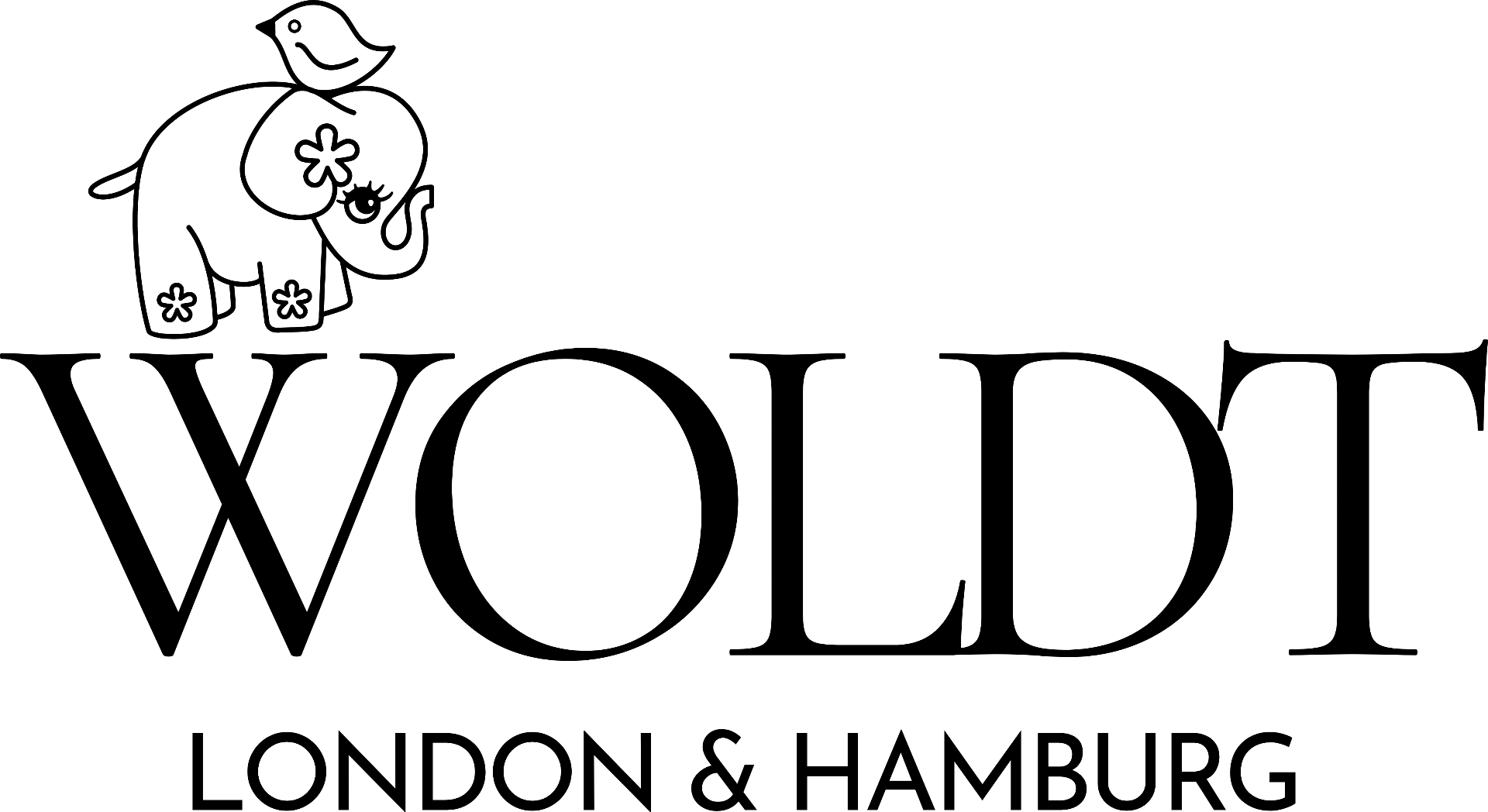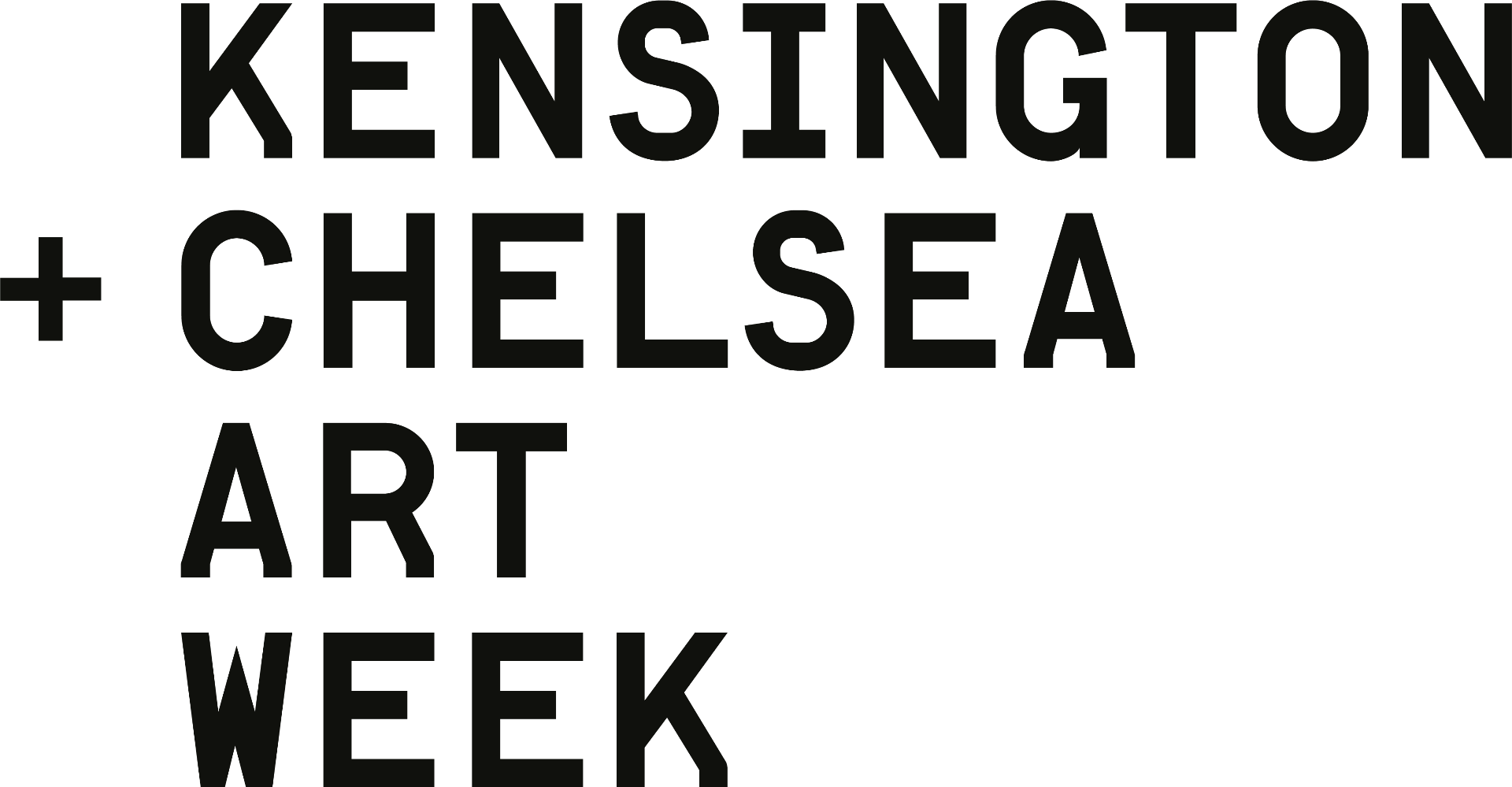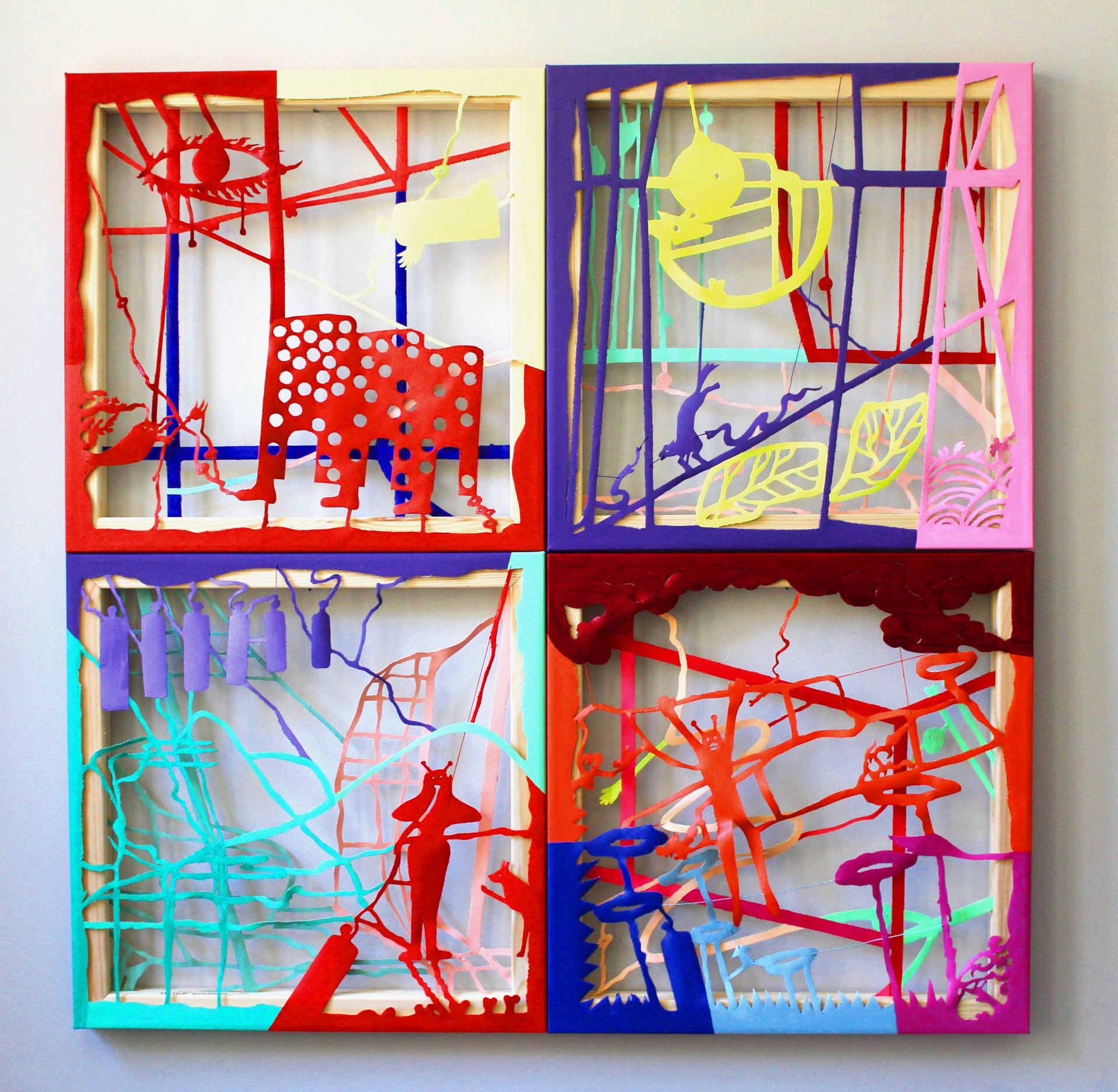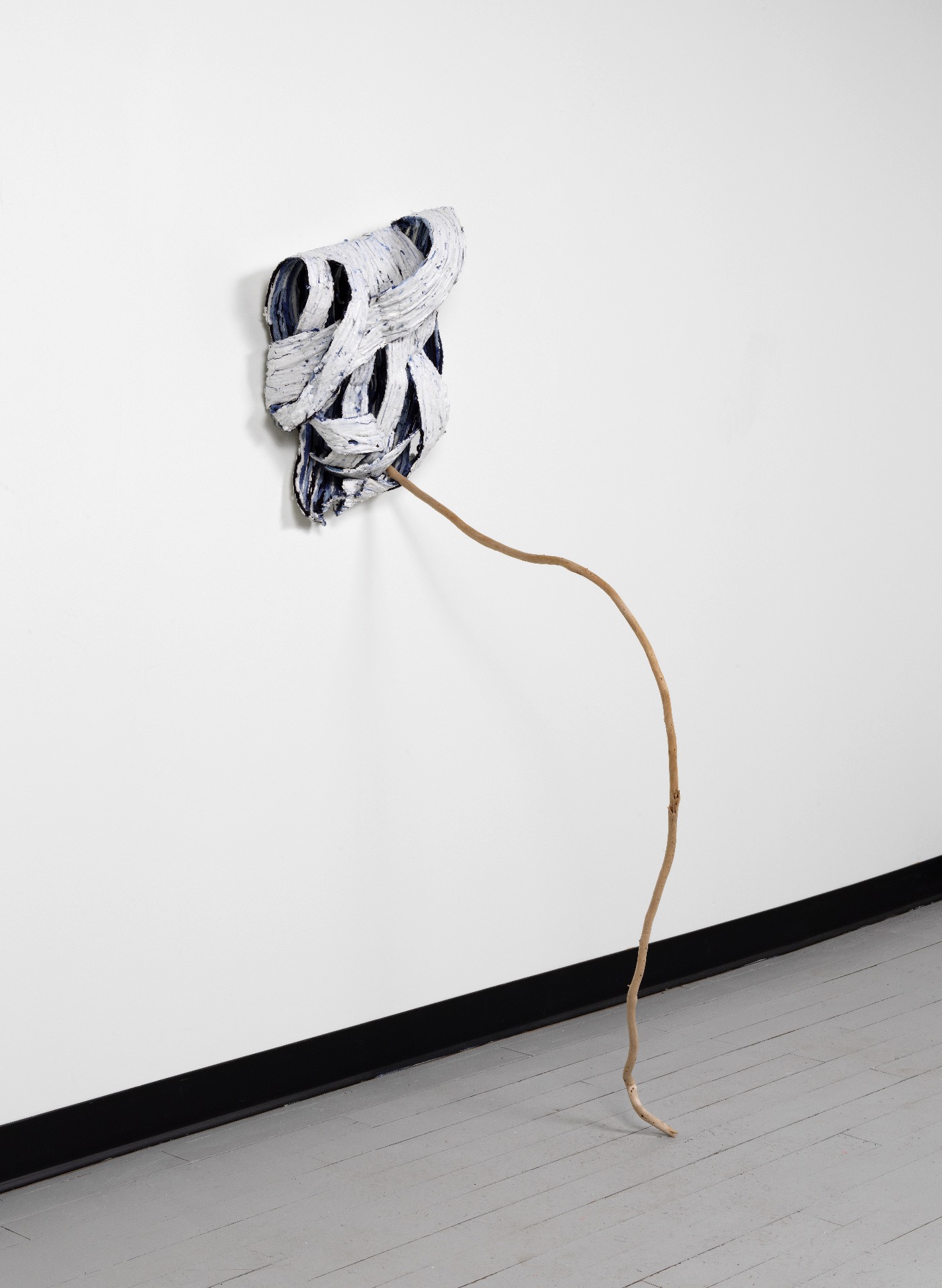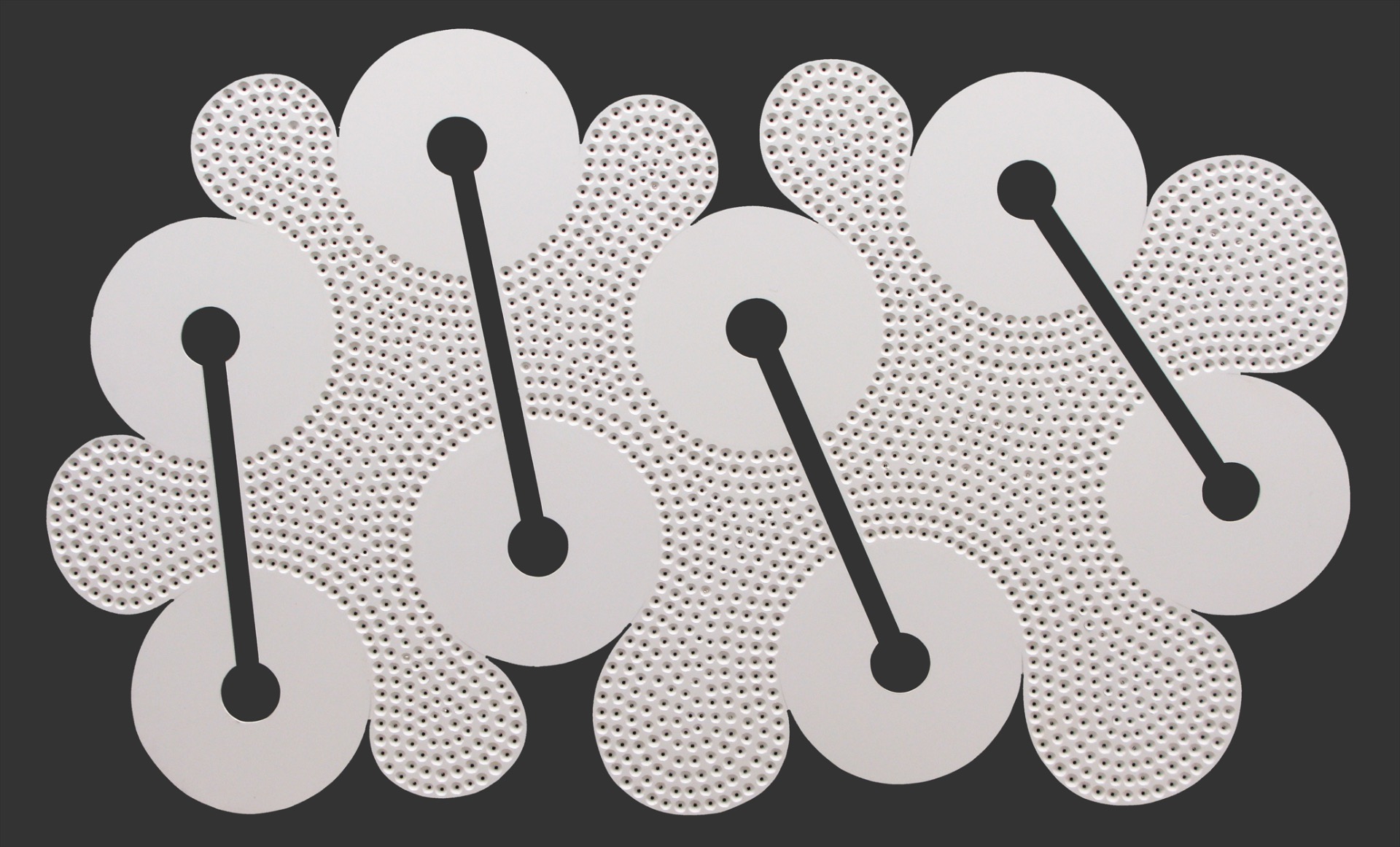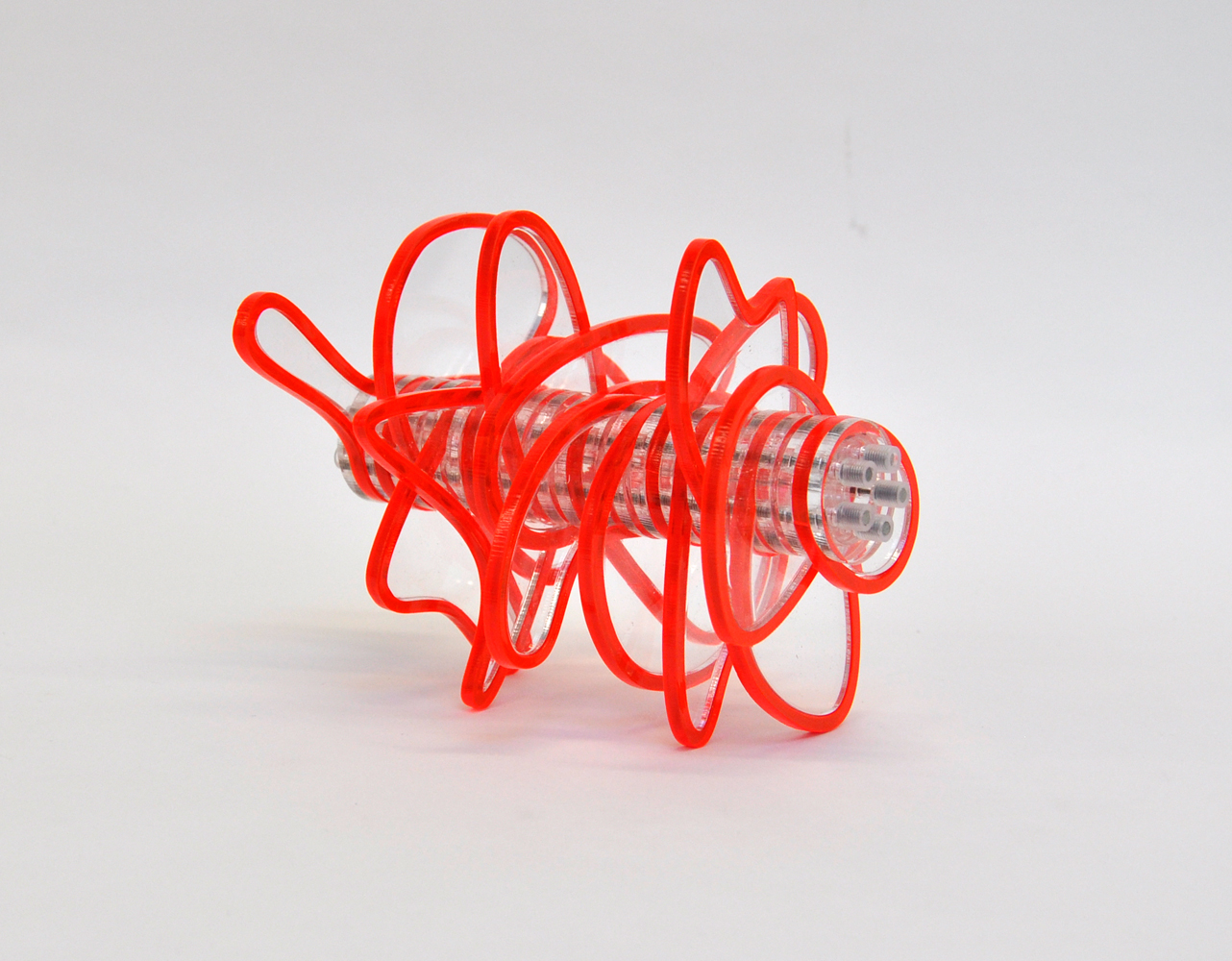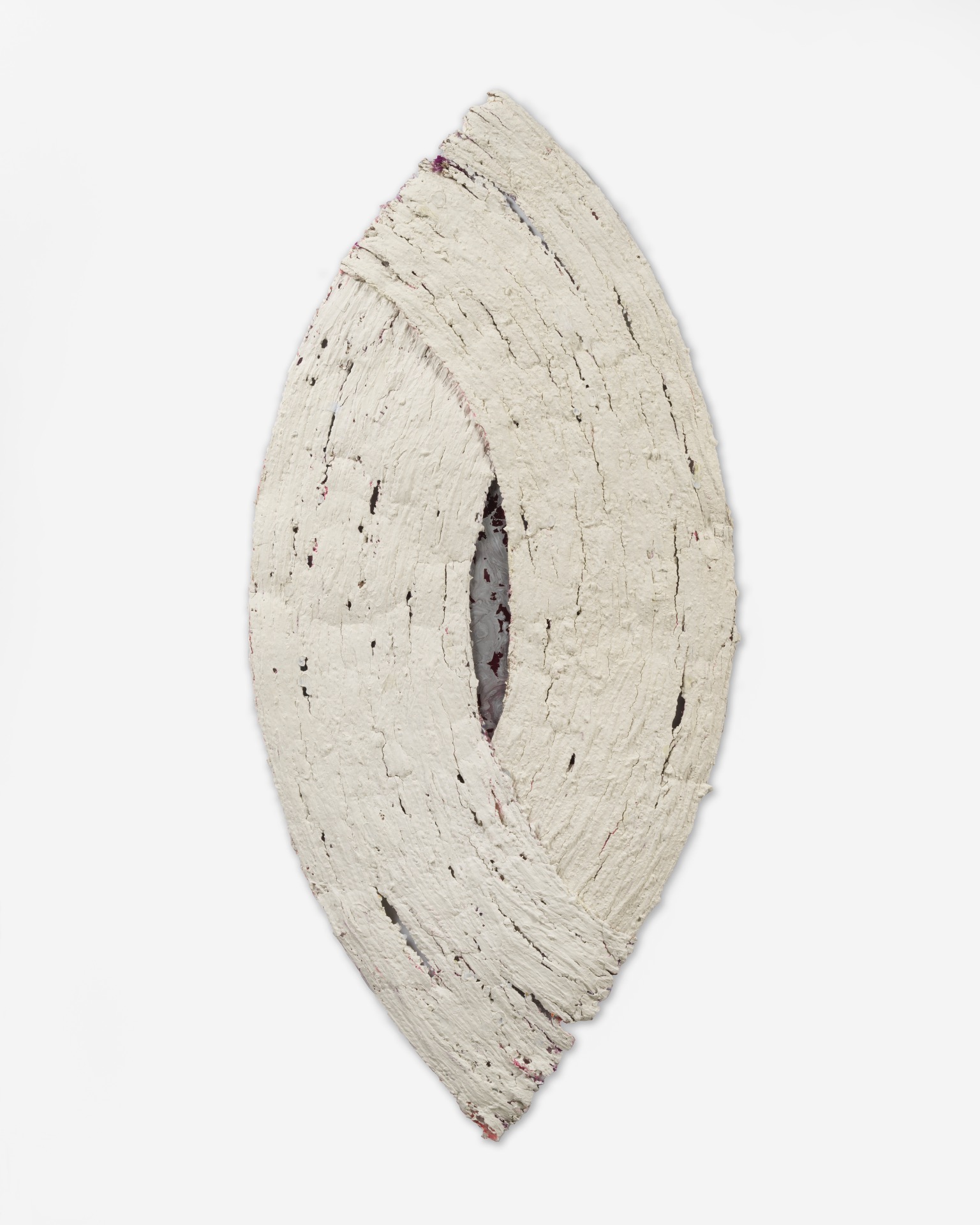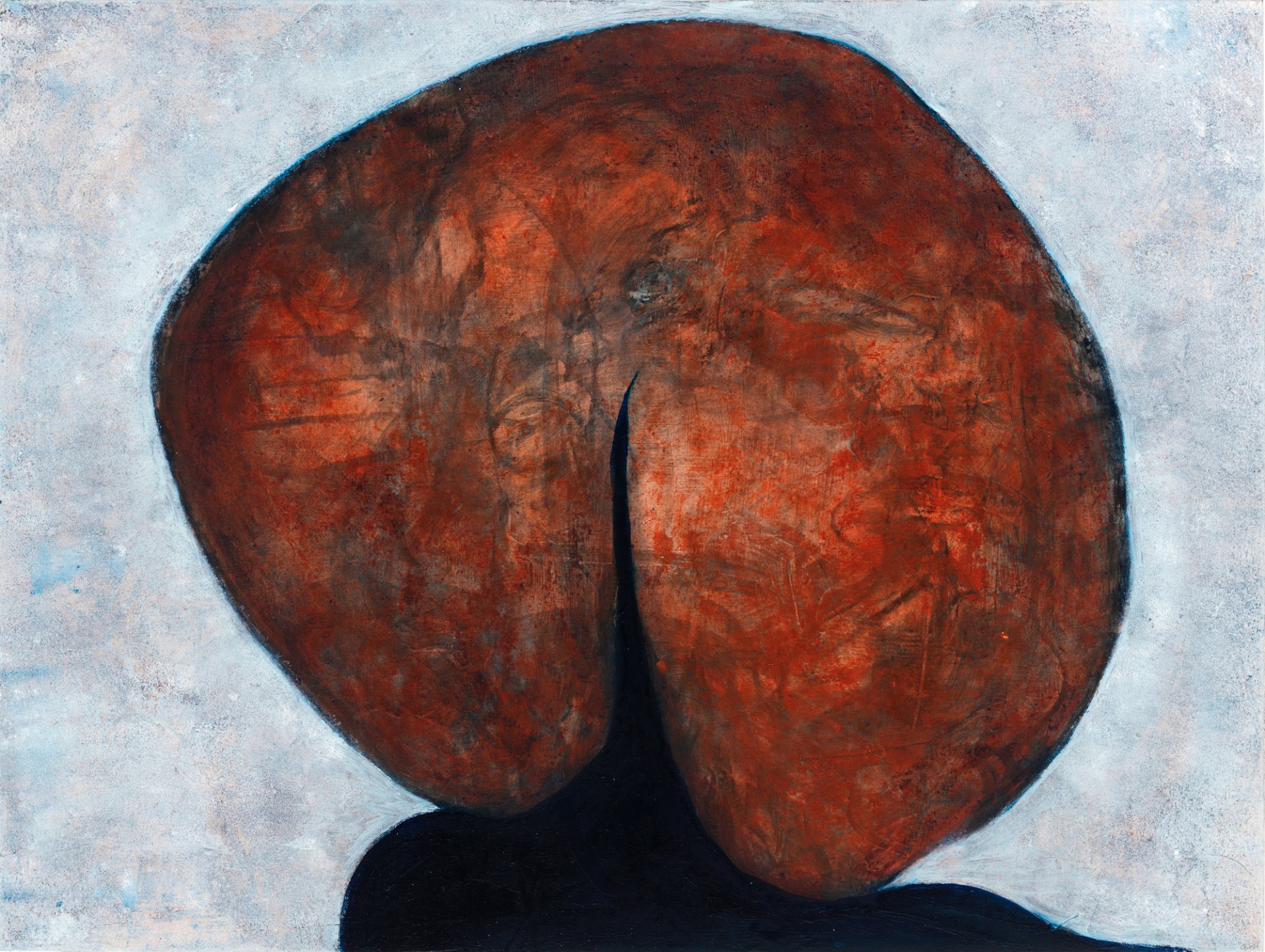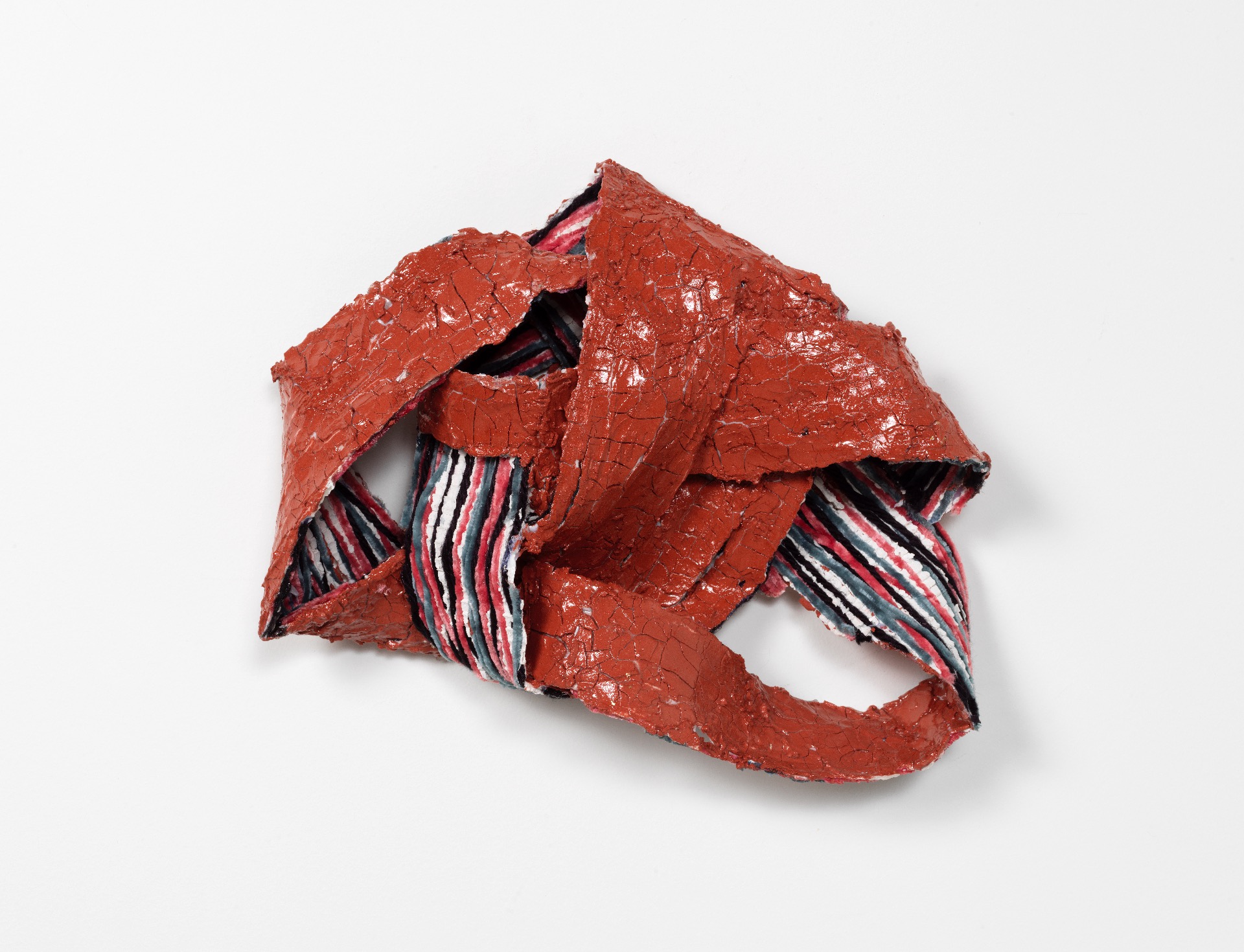Woldt Gallery
CURATORIAL RESEARCH PROJECT
Ethics & Memory Spaces in Arts
Aesthetic-epistemic and mnemonic spatial experience in arts and architecture in the context of digital transformation
woldt concept, Ethics & Memory Spaces, AI-video-creation, mp4, 20s. /This video was generated with AI technology (ChatGPT/Sora) and is presented here for research and artistic purposes ©woldt.concept
With "Ethics & Memory Spaces" the Woldt Gallery is developing its curatorial profile into an explicitly research-oriented dimension. In collaboration with our research partners, the project explores how spacial bodily experience – historically, aesthetically, and mnemonically charged – can be reinterpreted and conveyed under the conditions of current technological transformations, particularly in relation to digitization and artificial intelligence.
At its core, the project addresses artistic and architectural spaces that function as repositories of both collective and individual memory.
Examples such as Peter Eisenman's Memorial for the Mureded Jews of Europe in Berlin, or Anselm Kiefer's Studio ensamble in Barjac, or the gestural pictorial spaces of K. R. H. Sonderborg serve as points of reference where the interplay between space, memory, and aesthetic experience becomes exemplarily visible. Within the framework of "Ethics & Memory Spaces", these positions do not appear in the logic of an conventional gallery presentation; rather, they function as reference space for the gallery's curatorial-research practice, realized by gallery Director Prof. Dr. Isabella Woldt
In parallel, the Woldt Gallery develops new perspectives in direct collaboration with contemporary artists. There works for the project respond to the project's guiding questions, expand the discursive lines, and open pathways that mediate between artistic autonomy and societal responsibility.
The aim is to elaborate models for an ethically informed aesthetic analysis of space of memory and to make these accessible through digital formats – ranging from augmented reality walks to interactive knowledge environments. The project does not conceive of itself as an exhibition in the traditional sense, but as a process in which curatorial practice, artistic research, and theoretical reflection intersect. "Ethics & Memory Spaces" is conceived as a multi-year series of presentations extending over two or three years, taking place both in physical venues and in digital environments. We do not understand this sequence as a conventional succession of exhibitions, but as a curatorial-research-process that unfolds divers perspectives on the interrelation of space, memory, and transformation.
With this curatorial structure, the Gallery positions itself as a laboratory in which artistic autonomy and societal responsibility, aesthetic experience and mnemonic practice remain in dynamic interplay and create our object of investigation.

Seaside me
Exhibition
10. April – 30. April 2025
Selected Photography arts by Woldt concept are on display in Hafen City, Hamburg
Haspa Windows, Am Kaiserkai 1, 20457 Hamburg
Hosted courtesy of Hamburger Sparkasse
Bio-Mind Memory Processes and ART
Woldt concept
and K. R. H. Sonderborg
The exhibition visible on our website presents a confrontation between current video works by Woldt concept and the abstract, gestural-dynamic works on paper by Danish painter K. R. H. Sonderborg (actually Kurt Rudolf Hoffmann, b. 5. April 1923 Sønderborg, Denmark - 18. Februar 2008 Hamburg, Germany).
Woldt concept's videos address the themes of gaze and memory. This trilogy of videos was created between February 2023 and October 2024. The memories explored involve a retrospective view towards the sea as an origin, moving through an urban liveliness of the present, and culminating in the element of transience and capture within a "Storage"-Video.
Sonderborg's works on paper feature gestural lines in the sense of Informel that condense in a formalistic dissolution of focus. The boundaries of the picture frame are either broken or disregarded in a manner that parallels the videos' fragmentary nature, capturing moments in time.
Woldt concept, Bio-Mind Memory Processes Trilogy (1), Und auch wenn er nicht hier ist, ist die Welt da",
30sec. Video (not for sale)
Woldt concept, Bio-Mind Memory Processes Trilogy (2), "Heat, Seel was There", May 2023, 34sec. Video. (not for sale)
Woldt concept, Bio-Mind Memory Processes Trilogy (3), "Speicher", October 2024, 32sec. Video
not for sale
past exhibitions
Alex Kuznetsov, Edge, The Fear of Fog Series 2022, acrylic on canvas, 2022, 150x100x3cm
until 30 December 2022
in our space in
Hamburger Hof Passage
Jungfernstieg 26-28
20354 Hamburg
*1978 in Minsk, based in Lisbon
Following a lifelong passion for art, a renowned figure in the graffiti world, abstract artist Alex Kuznetsov creates his artworks across different mediums, including paintings, works on paper and prints. His energetic abstractions are awash with swipes of bold colours: blacks and whites, reds, blues and pinks. Colour fascinates Kuznetsov, bringing him to a state of meditative flux, where the process is as necessary as a result. Engaging with the vibrations of colour, Kuznetsov amplifies them with the power of movement and fully gives himself to an artwork.
During the upcoming exhibition, which Alex will attend for the opening in person, the gallery presents a series of the artists new artworks on canvas and paper.
The gallery presents a new series on linen and paper. What Alex says about his series:
Fog in the forest, fog on the road, a fog of time, mist in the head. Light coolness in the legs, the smell of moisture in the nose. Scattered light, leaves underfoot. It is unclear where to go, but the most frightning thing is to run into someone else. I always want to find a way out of the fog.
Although watching the fog from the side is an unforgettable sight. Layers and how they spread along the ground, enveloping the bushes are visible. As a rule, at the sunset or already quiet wiht the onset of twilligt. If you stand on a hillock, then it is below, it will not reach you, but mounds and trees are drowning in it. Very beautiful and mesmerizing.
I saw such fog this year when I returned home ot Minsk for a few days to my mother's dacha. He was there. Alluring, melancholic and living by his own laws. I really want us all to be able to return to where we came from whenever we want. But, for now, it's just fog. (Alex Kuznetsov, Nov. 2022)

Exhibition Catalogue printed format available in Online sales
digital format on request
our gallery space in Hamburger Hof Passage, Jungfernstieg 26-28, 20354 Hamburg
whats about
It seems that the artistic approaches of the two artists are disparate and little compatible. But their stories unfold from places and spaces, and act on events.
Florian Witt (*1990) and Sebastian Dannenberg (*1980), both artists based in Bremen (Germany) develop their works in reflection of public space.
Witt catalogs and arranges connections between urban structures and materials. The polymorphism and diversity of shapes and colors create spaces of possibility without defining too much. We are reminded of fences, constructions or even containers. His works switch between media, some drawings seem like arcade games from the 80's, his sculptures like fragments of paintings and seemingly out of context. All of this is an approximation of what image, what sculpture, what drawing can be. His work explores and leaves behind a confident unrest, one unrest that raises questions and invites the spectator to think now and ahead.
Sebastian Dannenberg, on the other hand, removes objects found from its respective context in order to transform them within the showroom. These can be architectural set pieces, color observations or simply a lighting mood. His works evoke the movement of the viewer. They usually refuse a clear view and want to be activated by careful consideration.
Go on a search and make connections and references.
PAINTING IS EVERYWHERE.
Starting from the drawing and the construction, I look for a common thread in everything. I paint as if I were drawing; build as if I were painting and write as if I were talking. It's about trying to live out one medium in the other and, if possible, to find a basic note that both have in common. (Florian Witt)
past exhibition
Nathalie Rey "Stuffed Animals" and "Plastics"
WOLDT concept "Trees of Memory" (Gedächtnisbäume)
22 JULY - 30 AUGUST 2022
Special opening: Thursday, 25 August 2022, 6pm
Join us for the event!
WOLDT GALLERY
Hamburger Hof Passage
Hamburg
Nathalie Rey, Untitled (Hommage a Louise Bourgeois), Dolls sewn together, 32x35x17cm, 2019
Price: POA
Stuffed Animals
Stuffed animals are witnesses, collectors, and mediators of our childlike emotions. They are friends and companions that convey and suggest feelings, attraction, and warmth. They are the recipients of love but also of anger and dissatisfaction. Sometimes, looking at them as an adult, memories return to us. They live their own life, indepenend free moving in our memory ( Essays & Publications).
For the current exhibition Nathalie Rey provided a. o. one hunging sculpture titled Hommage a Louise Bourgeois. The cuddly hug refers to the French artist Louise Bourgeois, who constantly returned in her artworks to her childhood, and led a conversation with her memories about family and the own identitiy, in order to achieve a rather general perspective on viewers own innerlife. Also on display Composition with stuffed animals` remains VI and Eternal Monsters.
Nathalie Rey, Eternal Monsters, 9 figures in crochet and one in felt, different dimensions, 2017
Plastics
For many years, Nathalie Rey has been interested in the problems of plastics, their function, utilization and appearance.
It is addressed in such earlier art works as Shipwreck (2018-2020) or Plastic Sea (2019-2021) and others, where she refers, among other aspects, to environmental pollution caused by microplastics.
But what seems controversial to her is the durability of that material, which is easy and relatively inexpensive to produce and use, however after use it remains often as non-recyclable waste. It pollutes oceans and other key areas of the environment. In the works Melted Plastic (2022) and Solid Waste (2022) currently presented in the Summer Exhibition, she turns the subject ad absurdum by referring to the beauty of the object. The artist consciously addresses the aesthetic beauty of the environmentally harmful material. Melted Plastic enchants in shape and color, caryfully carred surface; Solid Waste invites the viewer to linger and meditate over the object.
Nathalie Rey, Composition with Melted Plastic 5, melted plastic fixed on painted wood, 48x34cm, 2022,
Price: POA
Nathalie Rey, Untitled (Solid Waste Series), digital print on white dibond, 50x66,5cm, 1/5, 2022,
Price: POA
But what does intend it?
Here plastics are no longer objects of daily use, but objects of aesthetic consideration. Rey was inspired by the 1997 book "Objects of Desire. The Modern Still-Life" written by art historian Margit Rowell:
The art historian Margit Rowell discusses how the practice of still-life painting, by subtracting objects from space and time and from cultural and historical associations reinforced their physicality. (Nathalie Rey)
The artist, as she stated, follows the path of Giorgio Morandi and in these works completely removes any evidence of specific content, so that the viewer can concentrate fully on the form, the colouring, and the individuality of the object. Through this targeted awareness of the physicality of the object, the artist achieves that the viewer sharpens his senses, consciously recognizes the material as such, and fully perceives its existence.
WOLDT concept
"Trees of Memory" (Gedächtnisbäume), 2022
The idea for the "Memory trees" came from another artwork. It was an artistic intervention during the SAR (Society for Artistic Research) annual conference in Weimar 2022. The plants were present as participants in the Audimax of the Bauhaus University. The idea: Shall we talk about nature and sustainability? We were then asked and allowed to adopt the plants. I picked up two and drove home with them.
My research work on the image memory finally led me to the tree. The trees were already a central topic in my photo essay series titled "Theatre Forest" (2020), there were the fallen trees, I focussed on. Now there are young plants of interest. They are full of history and post-history. Let me explore these. The first is "Die Feige" (The Fig) and the other "Verwurzelt" (Rooted).
One is about the fig tree, which is one of the oldest useful trees known to mankind, or according to recent archaeological research, it is obviously as such to identify. It is the tree of life and the tree of sin at the same time. But it is also Feige, der Feige (German), the controversy of artistic freedom, as the artist and theorist Bazon Brock incisively described in a tweed on the resignation of the general director of documenta 15 Sabine Schormann due to allegations of anti-Semitism to the work "People's Justice" by the Indonesian Artist Collective Taring Padi for the documenta 15, – already removed from display in Kassel. The fig is the tree of meaning.
The almond tree is "Rooted". It is the root that fixt the tree, as the amygdala in the brain, regulates and fixed people's emotional life according to their perception. The amygdala, the almond-shaped part of the brain appears as a symbol and visualisation of memory through emotional expression.
The concept continues with "Palmette", the palm tree (coming soon).
WOLDT concept, Verwurzelt, 2022, Prunus amygdalus (Mandelbaum), ca. 120x30cm, paper and living plant of almond tree.
WOLDT concept, Die Feige, 2022, Ficus carica (Feigenbaum), ca. 110x50cm, paper and living plant of a fig tree. Referring to Bazon Brock's reaction to the resignation of the director of documenta 15 Sabine Schormann on twitter ,- artistic freedom in context.
past exhibition
During the summer time also on display in the gallery modern graphics from a private collector for sales, magnificently framed.
Hans Hartung (1904-1989), Schwarze Balken, colour-lithography, 1970, hand signed, numbered. ed. of 75, made by Poligrafia, motiv size 49 x 72 cm, frame: wood, gold with red bolus, 82 x 97 cm, prices: Lithography: POA & Frame: POA
You will find a. o. works by Carla Badiali, Hans Hartung, Victor Vasarely, Alberto Giacometti, Georges Braques, André Masson, Jean Cocteau, Antoni Tàpies, Tilopâ Monk.
past exhibition
History Nautic,
or how the Nature Transforms
History Nautic, 51.8 x 39 cm, 4 cm, white border, 2018
Woldt concept
photography essays
in juxtaposition with paperworks by
Antoni Tàpies
and his Contemporaries,
Nathalie Edwards
9 June – 7 July / extended until 20 July 2022
NEW !!!
Artist Talk with Nathalie Edwards
Hamburger Hof Passage
Jungfernstieg 26-28, 20354 Hamburg, Germany
The exhibition shows photo series that were created over a period of several years. They mostly represent natural aesthetics in different contexts and atmospheres, but also evoke personal relationships.
They will be accompanied by poetic texts and prose descriptions. In terms of their visual appearance, the photographs do not contain any decisive digital modalities.
Grey surprises me, 50.8 x 38.3 cm, 4 cm white border, 2018
Primordial, 50.8 x 31.3cm, 4 cm white border, 2020
However, if Tàpies implies a footprint in his works, then it is the symbolic imprints that man leaves in the world, that makes visible the direct connection between man and the world, or rather the earth. Here Tàpies reaches a sign-like symbolic dimension. This is also anchored in his preoccupation with spirituality. He was interested in the relationship between art as something truly haptic, such as the earth, dust, but also the spiritual, which is presented in symbols.
Woldt concept searches in her photographic series for the cognitive or affective leitmotif that led to the seemingly specific motives of nature. In it, the thread tries to find identity and its transformations or anchoring.
Nathalie Edwards, Radiant Earth Mother Goddess I, II III, hand sculpted of white stoneware clay, fried to 1000 degrees; hand finished in 22carat Italian Gold leaf; with 2 layers of shellac varnish to set. Specifications: I - weight 2.42kg, 20x23x9.5cm; II - 2.75 kg, 24x28x13cm; III - 2.37 kg, 22x24x11cm.
The collection will comprise of 111 goddesses in each of the elements; Spirit, Earth, Fire, Water, Air. The Goddesses will be exhibited as a grand tribe, once all the series is completed. The original pieces all being formed from 1.1kg of clay. The significance of repeated numbers is referenced in all the worlds' wisdom & religious traditions. 111 is significant to me personally as I woke regularly in the pandemic at 1.11am filled with creative inspiration from another place. The repeated numbers theme is continuing in parallel with the alchemic five elements as an integral part of the Goddess Collection.
For 'The "History Nautic" Exhibition I have introduced to the collection three unique hand built stoneware 'Radiant Earth Mother Goddesses', finished in Italian 22carat Gold leaf . Each hand built sculpture formed from 3.3kg (pre firing) of stoneware clay. Following on from my Wood Fired Earth Piece currently on display as part of the collective exhibition - Ash Ember Flame.
Woldt concept is the artistic name of the gallery owner, Dr. Isabella Woldt. She conceptualised the exhibition. Regarding the role of Gold as material of cultural identity see her blog text titled Gold as memory track:: https://www.iconology.hypotheses.org/1255
Tournded Outside, Part of the Photography Essay "Theatre Forest", 2020
The photographs will be presented in juxtaposition with Antoni Tàpies. The show presents 5 paperworks by Tàpies and a series of artworks by his contemporaries (private collection).
The focus goes into the questioning and visualisation of the history as a natural transformation.
Tàpies went through a several periods in the history of modern and contemporary art, and the show thematises his artistic use of earthly materials and creation of abstract forms in relation to the view of nature and its metamorphosis and in a strong relation to questioning the identity. Tàpies worked on the floor to create an immediate relationship to the earth or Nature.
Nathalie Edwards looked at the image of the feminine and its origins as she explored issues of identity and existence in 2020, also against the backdrop of the pandemic. The result is the conception of a series of sculptures, which she calls goddesses.
Nathalie Edwards is a British-born self-taught ceramic artist based between London & France where she has her own ceramics studio. Nathalie has a background in art & design with a Hons Degree in Interior Architecture & Design.
What she states about her art:
For me, the art of making is an expression of my feminine aspect; a place to be quiet and tune into my inner world. A place to release suppressed emotions, to 'be' and create, away from the 'doing' of modern life. My current body of works 'The Goddess Collection', is an evolving collection of work celebrating the feminine essence in bodily form. The collection started as a response to my isolation during the pandemic I was inspired by a beautiful female torso sculpture that my daughter had made me some years previously. I started to create female forms myself, quickly realising that I was creating Goddess sculptures, their forms carrying with them an ancient resonance from a previous time. Each form embodied the divine feminine, each coming to being with her own energy and unique form, arriving without conscious effort to be different from the previous.
Past exhibitions
from December 2020
Aligning
MeiMei'Marta Corada, Judith Mullen, Zelene Jiang Schlosberg, Nathalie Rey, and Russell Jakubowski
as our new participating artist we are welcoming
Sebastian Dannenberg
Alignment is a way of motivating yourself repeatedly.
We all have goals and plans and are always on the way to realising them. We take positions. Such positions also direct the work of the artists; this is about the presentation of at least one aspect of several orientations in the artists' practices. The Exhibition will present the gallery's artists points of view through their individual, inner reflections about the world:
Marta's - MeiMei's illusory notion of the surreal world is codified in her fantastic, grotesque sculptures and in unexpected moments kept in her photomontages; – Russell constantly searches for words and sounds by exploring the material when he produces his sculptures and two dimensional artworks, which informs his figurations; – Nathalie's inner worlds of emotion (determined by infantile experiences) are represented by stuffed animals and paintings; – Zelene's fibre art expresses the everlasting attempt to bind and connect things together: things which seemingly always threaten to fall apart; – and Judith Mullen reflects on the walk that she continues to make every morning as a ritual looking for the special natural aesthetics in trees, which catch her perception.
Sebastian extends the space by contouring three dimensional objects and structuralising their surface with visible brush stroke in his paint.
5 – 11 November 2021
Opening hours
11am – 5pm
eDora HouseThe Royal Society of Sculptors108 Old Brompton Rd London SW7 3RA, United Kingdom
MeiMei, Chrysalis, 2020
It is a transitional period, the moment of the eclosion. The piece still reveals it's previous estate yet also let us see what is about to come. I think it has multiple readings. The container is solid, metallic, slightly oppressive and it still defines the form of the sculpture. We meanwhile see the eclosion to a different state, which evolves and comes out in the shape of an infant's face and a white and soft matter. Horns are a protective symbol that appears during that vulnerable moment. It comes across my mind the juxtaposition between the industrial type shape of the metallic can and the organic undefined shape coming out. It's crucial to understand my working process. When I'm working I'm sourrounded by materials and objects I collect for this purpose, there can be ready made objects as well, or pieces I had produced in the past that were never used. My work is often a hybrid of assemblage art with more traditional ways of sculpting. /MeiMei/
What we say.
...It is a matter of processing an artistic transformation. MeiMei produced that piece over the pandemic, maybe she was thinking about our own new shape in a new situation and a new era coming out. We need the protection of the horns, our eyes were closed, we were dreaming, like we always do in the life. And as MeiMei stated, she made it over pandemic, but she would have done it also in another time, its just the idea of exploration new creative states of mind in new shaps. The fact is, when i look at it I immediately start to dream like the little creature does. But also I try to find out more about the emotional life of that creature profiled in its precisely defined face.
In Conversation
On the occasion of the solo exhibition with the WOLDT GALLERY, London, the artist Zelene Jiang Schlosberg holds a conversation with the gallery owner and art historian Dr. Isabella Woldt about, why the artist experienced the need to make the installation colourful and what does "Fake" mean.
ZELENE JIANG SCHLOSBERG
Air's Chamber
Fake, thread, canvas, wire, beads, acrylic, paper collage, 42x38x7.6cm, 2020
Special Event
dialogue performance with the oboist
Andrew Nogal
art-music performance video available on request
24 June 2021, 7 pm
opening night of
Kensington and Chelsea Art Week, London
The exhibition
The exhibition launches Zelene Schlosberg's newest artworks from 2020 and 2021. The artist expresses her response to the global pandemic crisis and exposes it in a new light regarding the perception of space, narratives, colour and figuration, but the music and implementation of the line as motive and material are still important references. The exhibition will be part of the Kensington and Chelsea Art Week, London, a festival for art and culture in the busy metropole.
Hint, acrylic and thread on canvas, 122x152,5x3.8 cm, 2014-2015
Going without saying, thread, canvas and nail, 28x25x6.35 cm, 2020
ZELENE JIANG SCHLOSBERG is a Chinese-born artist, living and working with her partner Daniel, a pianist, in Chicago. Recent solo exhibitions include North Central College (IL), East Central College (MO) and the University of Illinois at Chicago. Another upcoming solo exhibition will be at the Chinese American Arts Council Gallery (NYC) in late 2021. Participants of numerous groups shows include in CICA Art Museum Korea. Her painting "Directions #0" was featured on the cover of composer John Liberatore's 2018 debut CD album, "Line Drawings" (Albany Records). Her works can also be seen in Artist Talk Magazine (UK), Studio Visit (U.S.) and Art Market Magazine (Israel).
Zelene's work brings the viewer the silent but palpable experience of being between forms.
A constant preoccupation in her art is classical music, specifically contemporary art music of the last 30 years. The stylistic plurality of both the art and music worlds has caused Zelene to both to extend and to edit her own practice. The concept of rhythm is a notion that haunts her, and hopefully comes across, however tangentially, in her visual art.
Some unusual techniques she employs include cutting, wrapping, stitching, and crocheting. Holes in panels, pieces of rice paper, simple nails, dangling stones and the canvas itself are time-honoured techniques and materials that function not ornamentally but rather centrally in addressing issues of objecthood, of transience, as well as the powerful aesthetics of fragility. This fragility can be manifested in woven pouches, sometimes dangling precariously off the canvas, and nails jutting from every which way.
In her earlier artworks, Schlosberg focused on the line and its aesthetic abilities. As for example in the series Between/Line.
Line have the ability to meander, and this directional ambivalence is central to this series. The use of thread, a textile lacking in textural confidence, also helps to create a state of unknowing, of asking questions more than answering them. (...)
Lines are creating a deep sense of space a quasi architectural meaning, a necessary component of reflection and meditation says the artist.
AIR'S CHAMBER
In this challenging period of recent history, air quality and air particles have taken on grave importance. After one year's isolation, artist Zelene Jiang Schlosberg has created hybrid works that dangle precipitously between painting and sculpture, with attention to line and architecture always present. In this series of 12 works, Schlosberg highlights in a rather acute fashion some important themes from the Era of Covid: silhouettes of lungs, figures in an oxygen tank, lines of movement, extensive holes and indescribable patterns. In all, a general sense of anxiety pervades - the canvases have been harmed, after all, even if an optimistic colour palette is trying to maintain a brave face. An array of techniques (stitching, embroidery, script) are employed in the service of materials including beads, paper and wire. A multiplicity of textures, combined with three-dimensional tendencies, help make the role of natural light central to interpretation. Amorphous shapes emerge, rearrange, and suspend themselves, complicating the sense of dimensionality.
Ligament, canvas, acrylic, thread, 102x102x6.35cm, 2021
As in a dream, the emotional dimension of colour stimulates an intuitive response. Zelene has created labyrinthine narratives of abstract, figurative and mystical configurations in a world that is simultaneously familiar and unfamiliar.
Facing the pandemic in this real world, with unexpected developments and an invisible enemy for the people, the artist specifically engages the human world, the surreal world of creative thinking and making, reacting to the uncertainty of time that suddenly overlays the world.
When the comfortable real world becomes unfamiliar, the artist travels into the realm of the subconscious and comes up with characters that have been forgotten. They now populate the space of installations, resting in the floral structures or new architectural spaces of the cut screens and guard us.
Surreal landscapes emerge in which the collaged photography is the target of the female figures - nevertheless, they seem to belong to different worlds, something like when one turns to the space that is within the virtual world, space understood rather algorithmically, not bodily.
Irrelevant, canvas, acrylic, paper collage, 51x51x6.35cm, 2020
Moving away from the thread and textile, mainly in white and natural colours, she has been exploring for several years and which continue in "Askew" or "Four Seasons" made in 2020, Zelene now explores bright colouring and abstract geometrical forms, as shown in "Irrelevant" or "Misunderstanding". The Installation contains the titles as keywords that help clarify and express uncertainty, while in 2021, the artist starts to intensify her narratives by introducing figurative structures in her art practice. Unknown figures, some kind of devils, which breath in the whole air, filling or emptying bottles; snakes, which appear suddenly on the road; females and sitting males meditate, connecting the viewer.
Misunderstanding, canvas, acrylic, paper collage, 50x53x5cm, 2020
Hidden thoughts, cut canvases, colouring, collage, photography as a relation, drawing as a dialogue partner, moving from an individual frame, diptych like white, clear thread and textile to the installation of four, approaching space and time, words and questioning the stability, the non-figural and geometric forms transform into figurative narratives, telling a new story - the artist's answer to the inner and outer experience of facing a global pandemic.
superimpose the space
Air's chamber is not just space - in Zelene's art, space is transformed into an aesthetic play with the air that passes the musical instruments to evoke the sound that expands in time to create space.
Each canvas is a slice of time. I arrange the canvases one by one and stack them up. In my dream, each canvas is a cut tone. I pile up the stones and I go to build a temple. In my dream, each canvas is a musical instrument. I gather them together to compose chamber music. The cut canvases are three-dimensional, and one superimposed, the three-dimensional space they occupy continues to expand, upwards and upwards. I thought I was superimposing time and space, but that was a dream. If time and space can really overlap, then I will travel through the past, present and future. Then I can see my ancestors in the past and travel to the space station in the future.
dialogue performance
As music plays a decisive role in Zelene's artistic life, during the exhibition, she will examine the general state of mind in an intermedial dialogue with Andrew Nogal. The oboist is internationally known for exploring the boundaries of the music with his instrument. In a special event hosted during the exhibition, he will join Schlosberg for a spontaneous, collaborative performance on
Thursday, 24 June 2021, 7 pm
at the opening night for London, Kensington and Chelsea Art Week
Andrew Nogal
is an acclaimed orchestral performer, chamber musician, and interpreter of contemporary music. He is a longtime member of Ensemble Dal Niente, has performed with the Chicago Symphony Orchestra, Oregon Symphony, CSO MusicNOW, Talea Ensemble, and Alarm Will Sound. His festival appearances include June in Buffalo, Ravinia, and the NY Phil Biennial. He is a member of the Grossman Ensemble at the Chicago Center for Contemporary Composition. Recent international engagements include Japan, Australia, New Zealand, and the Beijing Modern Music Festival. An alumnus of the Lucerne Festival Academy, Nogal won first prize at the Fischoff Competition and the Kranichstein Music Prize at the Darmstadt Summer Courses.
mode of expression
Go through a dark aisle. First, the head, then the body. The umbilical cord is connected to the mother. The midwife picked up the scissors and cut the umbilical cord. The baby broke away from the mother's body, swimming, and began the adventure in the world.
- A fragment from an unfinished novel
IW<I thought that you were collaging the canvases when each part is coloured, but you prepare each part of the particular installation in natural colour and then colour them when all parts are already assembled...
ZJS>The process is to cut each canvas and finish cutting all canvases (for instance there are 8 canvases... of one work than colour each (using a very flat technique), then to stack there 8 canvas up and down and side by side, to collage these canvases as one work. For some, there are two layers of cut canvases to emphasize the three dimensional of the work so that the lighting can go into the body and go into the inside of the work.
IW<There are some motives in your works which I need to identify. They look like cut-off from photographs, and some are drawn...
Tendon, canvas, acrylic, thread, 61x61x6.35cm, 2021
to cut is to create
The creative process that the artist evokes in cutting canvas in her earlier series constitutes the expression of being harmed by the pandemic through making holes almost obsessively. To cut the canvas transforms her emotional experience into the movement of the scissors and creates indefinite organic forms and architectural spaces, where her figures, which she elevates from the surreal world, find their place in an uncertain reality.
Cutting occupies a central position in my art. A stretched canvas is no longer a supporting surface for paint, instead, I return canvas to its original function, a piece of cloth, more precisely, a piece of cloth covering a wooden foundation. Cutting pierces this three-dimensional space, hidden until now. The texture of the wood becomes exposed. This way of cutting, brings the shape of the person, the body, the line, and the nature the object to the surface. Shearing is the beginning of creation.
Objet, wire, thread, canvas, beads, organza and shredded paper, 27x49x5cm, 2020
silhouette
The act of cutting canvas manifests immediately and intimately. The momentum of the blade, as a gesture, translates to direct emotion. I see the gestures in my work breathe, run, struggle, fly, halt, and escape. I apply colors flatly to create a sense of silhouette. As nature's light goes in, shadows are cost on the wall. Between the tension and illusion of real and unreal, the canvas feels reminiscent of memories, of yearning and blurry screams.
Four Seasons, thread, canvas, nail and beads, 61x53x5cm, 2020
GALLERY
Price: POA please contact info@woldtgallery.com
please step into the virtual viewing room for a tour of the exhibition
Lockdown Toy No. 2, The Good Ship, perspex and stainless steel, 2020
in Conversation with Russell Jakubowski
Lockdown Toy No. 1, perspex and stainless steel, 41x24x12cm, 2020
For many years Russell has been interested in the connections and relationships between human processes on a psychological level, and interpersonal connections on a social level. There are structures in his artistic practice that physically visualize these connections in individuals and between people. Even the wall-mounted works made of PVC in 2012 underline precisely these aspects. Geometric forms and designs become representations of systems we are a part of. They appear as networks that are constantly being supplied with new content and information from perception, experience, and reflection.
Russell conducts his artistic investigation of the circumstances through a meticulous examination of the material and its technical possibilities. He chose PVC, perspex, and acrylic because here he can control and finish the material through targeted cuts and modeling. The artistic practice results in artworks characterized by exceptionally patient precision and attention to detail.
Russell provides more detailed explanations of these Toys, as he calls these sculptures, in the short videos, where some explanations of the artistic creation process are given by the artist himself.
Dr.phil. Isabella Woldt
Lockdown Toy No. 2, The Good Ship, perspex and stainless steel, 36x31,5x13cm, 2020
Void
Here in Tracker and Resistance Is Not Futile Russell underlines the connecting elements in these relationships. The way they are organized together and where connections are created are made manifest by empty or missing spaces.
These forms are visualizations of thoughts that disappear at some point in the memory or the subconscious, or like people that suddenly appear in our life, whom we integrate into our system, finely or loosely, but who could also disappear again and again, and do so. Then there is a trace of memory that emerges as a moment on a connecting line in a network, where empty space locates the missing content and could refer to a struggle.
These artworks concern the struggle to organize or contain something. The void spaces represent a missing part of the structure that may have acted as a restraint. As these elements are indeed 'missing' the flowing mass might be seen to be free to flow on. Resistance is Not Futile was exhibited with a brief narrative:
"If your efforts come to nothing, you will at least leave a space where you were".
Resistance is Not Futile, PVC, cut by hand, wall-mounted, 110x71x0,5cm, 2012
Profiles
The red orbital trace-shapes in Red Orbits oscillate around a hard core, a spin, where they are anchored. They revolve around the core, as the thought revolves around an idea, as we humans revolve around our networks, around our task, or within structurally organized systems. The position of the 'leaves' can always be put in a new position, which veins through the entire composition. You could potentially also add more sheets and let them circle with the existing ones. But they remain in orderly systems.
Red Orbits, acrylic and stainless steel - 25 x 19cm (approximately) - December 2018, Edition of 4
A way of looking at this is like an axis of time extending from top to bottom through the assembled layers with effort described on a lateral plane extending away from it. Like a three-dimensional graph. Viewed as a whole this can be seen as a snapshot of efforts through time, with everything else stripped away so that only a skeleton of activity remains.
Red Orbits, Angel 1, acrylic and stainless steel, 12x10x9cm, 2019
Made from numerous individual acrylic components – some of these compositions consist of more than 100, and held in place by stainless steel rods. – Imagined profiles of energetic orbital paths are arranged from one end to the other. Each one is asymmetrical, varies in distance from the centre, and returns to a tight curve around the core.
Red Orbits, Angel 2, acrylic and stainless seel, 12x10x9cm, 2019
The core gathers up and anchors these red trajectory forms into a column of imaginary traces of effort and activity.
Toys
And then, in Russell's Lockdown Toys - produced during the pandemic (2020 / 2021) we see a completely different system and interconnections. Made from strongly coloured opaque acrylic he presents fundamentally changed structures that result from the experiences and perceptions of the pandemic time. The colorful parts stick closely together, they could move, but the movements and shifts are suddenly no longer as ordered as they were. The systems must come to a standstill or they break.
Lockdown Toy No. 3, Voices On The Airwaves, perspex and stainless steel, 26x22,5x16,5cm, 2020
"In March 2020 we entered into a state of Lockdown. The multifarious components of this sculpture are a mechanical representation of us as individuals and organisations and the connection we have with one another as part of society. In this work, each component is unable to advance independently. Bound together, increasingly aware of the need for financial lubrication, and trapped aboard our lifeboat we are stationary but moving through time. The Good Ship shepherds us towards vaccination and the promise of a more gregarious future."
Lockdown Toy No. 4, The Cavalry, perspex and stainless steel, 28x17,5x11,5cm, 2021
Self portrait I, oil, wax, charcoal on board, 50,8 x 40,64cm, 2017
Resilience I, plaster, yarn, glass beads, acrylic, 213,36x243,84x12,7cm, 2020
Shield I, plaster, yarn, resin, enamel, 121,92x60,96x2,54cm, 2020
My engagement with specific materials has a long family lineage beginning with my great grandfather, Julius Schubert, who emigrated from Denmark in 1870. Schubert was one of a few fresco painters who helped to rebuild Chicago and vicinity after the Chicago fire. A recent trip to the earliest frescoes found in the ancient cave paintings at Grotte de Niaux, France, showed records of daily rituals and interaction with the natural world and internal well-being. The makers of these early frescoes also employed walking, ritual and repetition to speak of their connection to nature. My recent modular figurative sculptures and mixed media objects employ some of this the ancient fresco technique bringing historically grounded materials into contemporary sculptural and painting discourse. It is through a continual process of constructing, deconstructing and reconstructing that I reach outside of the familiar and invite the viewer to engage in the shared nuances of the human condition.
Self portrait II, oil, charcoal, wax on board, 45,72 x60,96cm, 2018
Judith Mullen
is US American artist, living and working in Chicago. She studied painting and drawing at the School of the Art Institute of Chicago II and obtained there her BFA and MFA. During her artistic career, she exhibited in numerous solo, group exhibitions, and curatorial projects. Her studio practice over the last several years evolved from traditional painting to a more sculptural practice using a handmade plaster and yarn-based material that she developed as seen in Resilience I and Mask IV, and Shield I. Judith explains that she usually does not produce pre-sketches or drawings for artworks. They are rather results of her artistic practice processes in handling direct materials, which she uses for creations.
The current exhibition, which takes place in virtual space, refers to Judith's artistic processes during her walks in the landscape, especially the wood, where she explores the structures of nature and their impact on our senses and cognitive perception.
Judith points out that in walking, interpretation frequently lags behind the actual temporal experience. When walking we transgress and re-establish new boundaries by continually redefining a new frame for our field of experience. Walking itself does not make art in the traditional sense excerpt for perhaps a trail as in seen in Richard Long's A Line Made by Walking. The physical act of putting one foot in front of the other is repetitive and tied to rhythms of organic processes. Wandering, the deliberate moving off a set course is about non-conforming and remaining open to a new way of facing everyday challenges. With this type of ambulation, the role of gesture and habit are the foreground and suggest opportunities for ritual as material and conceptual connection with nature. It is and an invitation to linger, to slowly immerse yourself in an environment like a cave or a forest that allows for transformation.
Judith's performative approach to the regulation of her artistic practice in a dialog of her body with the processes of natural surroundings results in a daily ritual.
Mask IV, plaster, yarn, glass beards, 45,72x30,48x17,78cm, 2020
Walking or wandering in a forested area is a daily part of my studio practice. Here the tree-forms act as metaphor, respite, teacher and model for my overall art practice where I combine many mediums and textures. While walking I meditate on the ever present awareness of the impact on the human body and mind as a result of cultural pressures, communication overload and isolation. I am curious about the psychic and intellectual effects experienced in this ritual of walking in the forest and how these manifests in processing concerns related to a range of emotions such as joy, loneliness, uncertainty and fear. The resilience of the tree and its adaptability to changes in the landscape is a model I use to express our shared human desire for strength and courage. Reflecting on a quote from Janet Laurence from her work found in After Nature, Laurence states, "Trees for me are the great signals of change. They become a register of what's happening through climate change, pollution and poisoned waters." In my sculptures the tree is represented by references to bark using skin like materials such as resin, handmade tree bark, chicken wire, cheesecloth and Ace bandages. The bark of the tree is made up of living cells and acts as a skin which shields the tree from disease, animals and insects much like our own human skin. Following in the footsteps of Ana Mendieta I gather found, up-cycled and recycled materials which can be woven and cast into figurative wall and free-standing sculptures and nest like assemblages. My mode of combining materials mimics the ritual and repetition of walking in the forest. Interweaving or layering of materials speaks to a balance between strength and fragility.
GALLERY
Prices: POA
Artwork in Focus
Mask VI
plaster, yarn, acrylic, pigment, 20,32x30,48x7.62cm, 2020
This mask becomes tangled. This rust-red work evokes an impression of the symbol of infinity, and therefore its shape is reminiscent of the constant natural course of things. And yet it is not freely exposed to the forces of impermanence. The surface is structured like a crust, a protective crust, a protection against the influences of transience.
Mask II
plaster, yarn, pigment, acrylic
60,96 x 45,72 x 25,4cm, 2020
It's a form that writhes in itself. The green pigment refers to the natural polles that float in the air. And yet it has found its constancy in a form.
The artwork is part of a series that Judith titled Masks. As the artist explains, the title refers to the journeys, which she undertakes between the urban space of the city and the forest.
The mask is protection, it protects our emotions and makes us appear strong.
POA
For all requests regarding the artist and artworks presented please Contact the gallery
